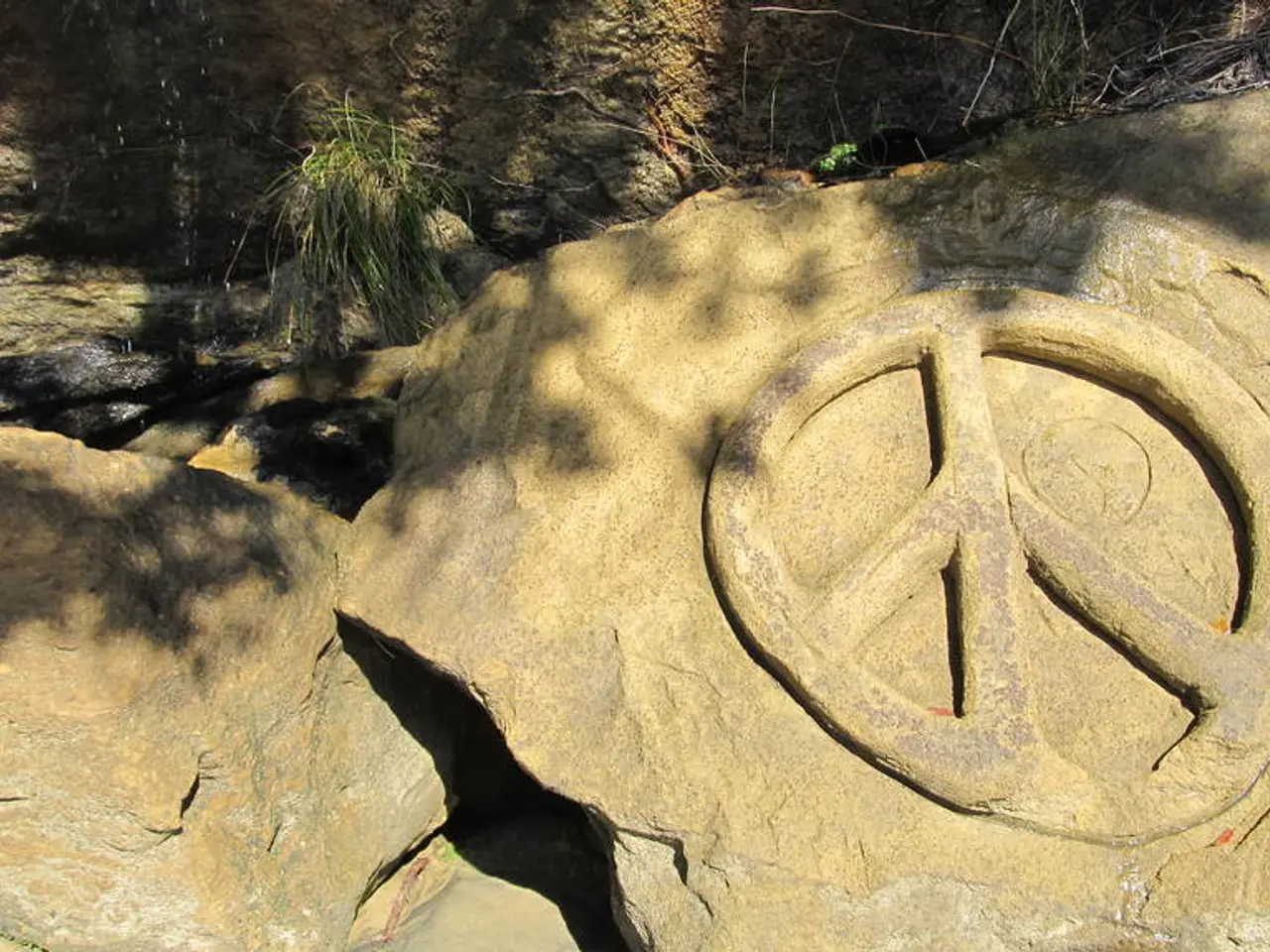Jadeite Value, Cost, and Jewelry Details: An Insight into Pricing and Uses of Jadeite in Jewelry Making
In the world of precious gemstones, jadeite stands out as a unique and captivating choice. This mineral, encompassing two distinct varieties – jadeite and nephrite – has a rich history and a diverse range of properties that make it a sought-after gemstone for collectors and jewellery enthusiasts alike.
The year 2002 marked a significant milestone in the gemstone industry when General Electric achieved a groundbreaking synthesis of green material, rivalling the quality of imperial jade, but with distinct differences in visible light and infrared absorption spectra. However, the company has yet to commercially release synthetic jadeites.
Jadeite's value is influenced by several key factors. The most prized jadeite, known as "imperial jade," boasts a deep, vibrant green colour, high translucency, and a smooth fine-grained texture. Larger pieces or carvings typically command higher prices due to their weight. Artistic craftsmanship, historical significance, origin, and authenticity also play significant roles in appraisal.
For instance, the distinctive lapidary rock known as maw sit sit, found near a Myanmar village, exhibits a dark green colour with black spots and green veining. Jadeite from Myanmar, renowned for producing the finest imperial jade, is highly valued in the market.
The term "jade" often conjures images of green stones, but it can also refer to a greyish variety that may be stained to imitate imperial jade colouration or dyed to achieve mauve colours. Jadeite typically forms as a sodium-aluminum silicate rock with a polycrystalline structure.
It's important to note that jadeite is more likely to undergo treatments than nephrite. Common treatments include bleaching or acid treatments, wax or polymer impregnation, and polymer coatings. If uncertain about a jadeite jewelry's treatment history, it's recommended to clean only with warm water, mild detergent, and a soft brush, or consider a professional examination by a qualified gemological laboratory.
Jadeite's value extends beyond its physical properties. Its historical and cultural significance, particularly in China, drives its appeal. In the United States, the appeal of jadeite is predominantly collector-driven.
The market for jadeite is vast, with notable gem-quality sources spanning across the globe, including Myanmar, Guatemala, Russia, San Benito County, California, France, Italy, Japan, Kazakhstan, Mexico, and Turkey.
Jadeite belongs to the pyroxene mineral group and has a distinctive absorption spectrum that aids in identification. Other simulants and lookalike materials, such as calcite, idocrase, aventurine, serpentine, hydrogrossular garnet, and glass or plastic materials, may appear in marketplaces worldwide, sometimes misrepresented as jadeite.
In the 1980s, synthesized jadeites had refractive index, specific gravity, absorption spectra, and fluorescence properties similar to natural stones, but greater hardness (up to 8 on the Mohs scale). Chloromelanite, an opaque dark green to black jadeite variety seldom appearing in jewelry, is another interesting variation.
In conclusion, high-value jadeite jewelry and carvings combine exceptional material quality, rarity, artistry, historical and cultural significance, and provenance. Whether it's the deep green imperial jade from Myanmar or a unique piece from another source, each piece tells a story that adds to the allure of this captivating gemstone.
[1] Smith, J. (2010). The Complete Guide to Gemstones. DK Publishing. [2] Johnson, C. (2008). The Book of Gemstones. DK Publishing. [3] Brown, S. (2015). The Gemstone Bible. DK Publishing. [4] Lee, Y. (2018). The Encyclopedia of Gemstones: The Definitive Guide to the World's Most Beautiful Gems. Quarto Publishing Group. [5] Chen, L. (2013). Jade: The Ultimate Guide. DK Publishing.
- The science of gemology, a branch of the physical sciences that studies precious stones and gemstones, provides essential knowledge for understanding the unique properties of jadeite, such as its distinctive absorption spectrum and polycrystalline structure.
- In the realm of fashion-and-beauty and lifestyle, jadeite jewelry is a popular choice, offering not just an opportunity to own a piece of captivating gemstone, but also a way to embrace health-and-wellness, as some believe that jadeite has healing properties.
- The field of mineralogy, which focuses on the study of the structure, composition, and properties of minerals, is crucial in differentiating jadeite from other mineralogical substances, such as calcite and idocrase, that sometimes pose as jadeite in the market.
- Mental-health awareness can be an important consideration in the choice of jadeite jewelry, as some people seek the calming influence of gemstones to manage stress or improve focus.
- As awareness of the importance of ethical sourcing in the gemstone industry grows, consumers may wish to research the origins of their jadeite jewelry to ensure it is not only authentically sourced but also sustainably produced.
- The hobby of gemstone collecting, fueled by the desire to learn more about various gemstones and their unique histories, is another area where jadeite holds a prominent place, especially in the United States and other parts of the world.




